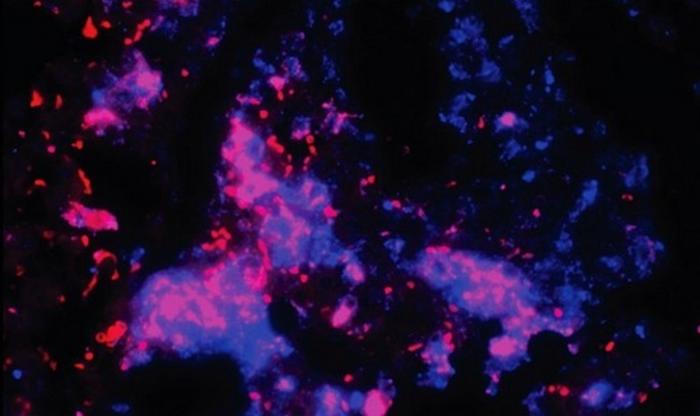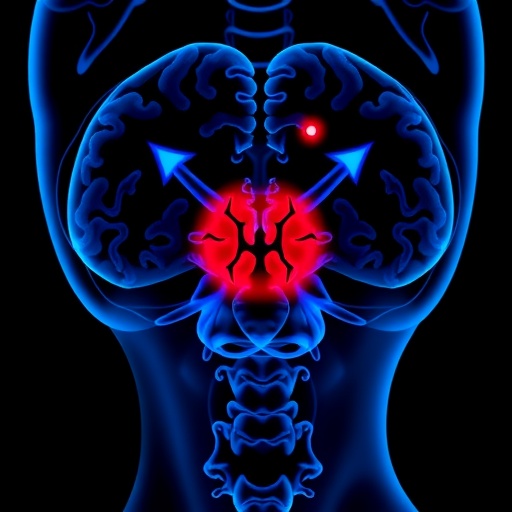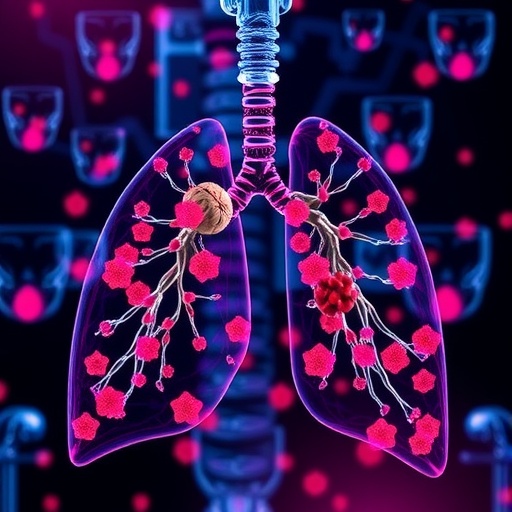
An innovative approach to combating tuberculosis (TB), one of the world’s deadliest infectious diseases, has emerged from groundbreaking research at Johns Hopkins Medicine. In a new study published in Nature Communications, investigators report that adding navitoclax—a drug currently under clinical trials as a cancer treatment—can substantially enhance the efficacy of traditional tuberculosis therapy by promoting a form of cell death that limits lung damage and bacterial spread. These findings, derived from rigorous mouse model experiments, reveal a promising avenue for host-directed therapies that work alongside antibiotics to improve patient outcomes and potentially reduce the notoriously long and invasive TB treatment durations.
Tuberculosis, caused by the bacterium Mycobacterium tuberculosis, remains a global health crisis, with an estimated 10.8 million new cases and 1.25 million deaths in 2023 alone, according to the World Health Organization. Standard treatment regimens typically involve a combination of antibiotics taken over six months or longer, presenting significant challenges including drug resistance, patient compliance issues, and substantial risk of lung scarring. The Johns Hopkins team aimed to address the biological underpinnings of lung tissue damage during infection, focusing on how infected host cells die—and how manipulating this process could mitigate the disease’s devastating consequences.
The body employs different programmed cell death pathways to manage infected cells. In the early stages of TB infection, apoptosis—a carefully orchestrated and immunologically quiet form of cell death—helps contain bacterial spread by systematically dismantling infected cells without provoking severe inflammation. However, as the infection progresses, M. tuberculosis manipulates host cellular mechanisms to shift toward necrosis, an uncontrolled form of cell death characterized by cellular rupture and the release of inflammatory contents, which exacerbates lung tissue destruction and facilitates bacterial dissemination.
Central to this pathogen-driven hijacking is the upregulation of Bcl-2 family proteins in infected host cells. These proteins actively inhibit apoptosis, enabling the bacteria to escape immune surveillance and create necrotic microenvironments conducive to its survival and proliferation. Recognizing this molecular subversion, Medha Singh, Ph.D., the study’s lead author, and colleagues hypothesized that blocking Bcl-2 activity could tilt the balance back toward apoptosis, thereby restricting disease progression and reducing tissue damage.
Navitoclax, a pharmacological inhibitor of Bcl-2 proteins developed primarily for oncology, was employed in conjunction with the standard antibiotic cocktail rifampin, isoniazid, and pyrazinamide (RHZ) in a well-established murine TB model. Over a treatment period of four weeks, mice treated with navitoclax plus RHZ exhibited a dramatic 40% reduction in necrotic lung lesions compared to those receiving antibiotics alone. Crucially, these animals also showed significantly less bacterial spread to secondary organs, such as the spleen, underscoring the drug’s potential to reinforce host defense strategies.
Advanced in vivo imaging techniques, specifically positron emission tomography (PET), allowed the researchers to dynamically measure apoptosis and fibrosis within the lungs during treatment. Findings revealed that navitoclax nearly doubled apoptotic activity in pulmonary tissues and decreased fibrotic lung scarring by 40%, hallmarks of reduced pathological remodeling and better-preserved lung architecture. Dr. Laurence Carroll, an expert in radiology and a study co-author, highlighted the promise of PET imaging not only as a research tool but also as a potential clinical biomarker to monitor responses to host-directed therapies in real time.
Importantly, navitoclax alone demonstrated no direct antimicrobial activity against M. tuberculosis. Rather, its benefits stemmed exclusively from modulating the host response, amplifying the potency of antibiotic treatment by steering infected cells toward apoptosis instead of necrosis. This dual mechanism translated into a 16-fold improvement in bacterial load reduction, suggesting that host-directed adjunct therapies could revolutionize TB treatment paradigms by attacking the disease on two fronts.
The implications extend beyond tuberculosis. Dr. Sanjay Jain, senior author and a distinguished pediatric infectious diseases specialist, emphasizes that similar strategies might be applicable to other chronic bacterial infections marked by harmful necrotic inflammation, including those caused by Staphylococcus aureus and non-tuberculous mycobacteria prevalent in the United States. This broadens the potential clinical impact of Bcl-2 inhibition well beyond TB, opening doors to novel treatments that mitigate inflammation-driven tissue damage in diverse infectious diseases.
Yet, the transition from animal models to human patients will require carefully designed clinical trials. Johns Hopkins scientists intend to leverage their pioneering imaging modalities developed at the Center for Infection and Inflammation Imaging Research, where Dr. Jain directs efforts to noninvasively monitor host responses and fibrosis. These tools could provide early, actionable readouts of therapeutic effectiveness, facilitating accelerated drug development and personalized treatment strategies in TB and other inflammatory pulmonary diseases.
If clinical validation proves successful, navitoclax or analogous host-directed agents could be integrated into existing antibiotic regimens, potentially shortening therapy durations, reducing relapse rates, and preventing the chronic lung damage that afflicts many TB survivors. This would mark a monumental shift in the management of tuberculosis, a disease whose complex interplay with host immunity has long challenged researchers and clinicians alike.
The study also addresses critical global health concerns regarding TB drug resistance. The ability to enhance antibiotic efficacy through host modification offers a complementary approach to combating resistant strains, which have become a growing barrier to control efforts worldwide. Moreover, mitigating lung scarring and post-TB lung disease, an emerging epidemic in its own right, will significantly improve quality of life and long-term respiratory function for millions of patients.
Contributing authors from Johns Hopkins who supported this rigorous work bring expertise across infectious diseases, radiology, immunology, and molecular biology, underscoring the collaborative nature of such translational science. Their combined efforts herald a future where understanding and manipulating the host-pathogen interface at the molecular level leads to safer, more efficacious treatments.
Funded by multiple grants from the National Institutes of Health, this research exemplifies how federal investment in basic and clinical science can foster innovations with the potential to save millions of lives. As tuberculosis continues to claim lives disproportionately in low- and middle-income countries, this host-centered strategy offers hope for more accessible, effective therapies that preserve lung health while defeating one of humanity’s oldest microbial foes.
Subject of Research: Tuberculosis treatment and host-directed therapy using navitoclax to promote apoptosis and reduce lung damage.
Article Title: Adding Navitoclax to Standard TB Treatment Enhances Cell Death, Reduces Lung Scarring, and Improves Bacterial Clearance
News Publication Date: March 27, 2025
Web References:
Nature Communications
World Health Organization TB Fact Sheet
References:
Singh et al., Nature Communications, 2025
Image Credits: Singh et al. Nature Communications 2025
Keywords: Tuberculosis, Bacterial infections, Animal research, Lungs, Clinical research, Cell apoptosis, Drug studies, Positron emission tomography, Clinical trials
Tags: antibiotic resistance in tuberculosiscombating global tuberculosis crisisenhancing efficacy of TB therapyexperimental cancer drugshost-directed therapies for TBimproving tuberculosis patient outcomesJohns Hopkins Medicine tuberculosis studylung disease prevention post-TBMycobacterium tuberculosis researchnavitoclax clinical trialsstrategies for reducing TB treatment durationtuberculosis treatment innovations





